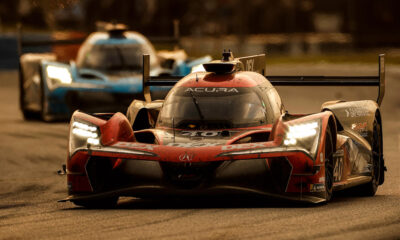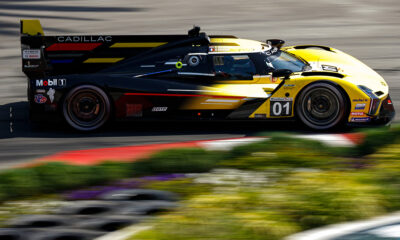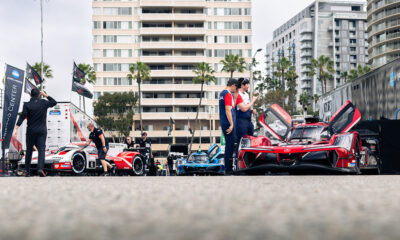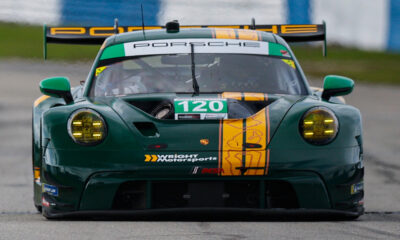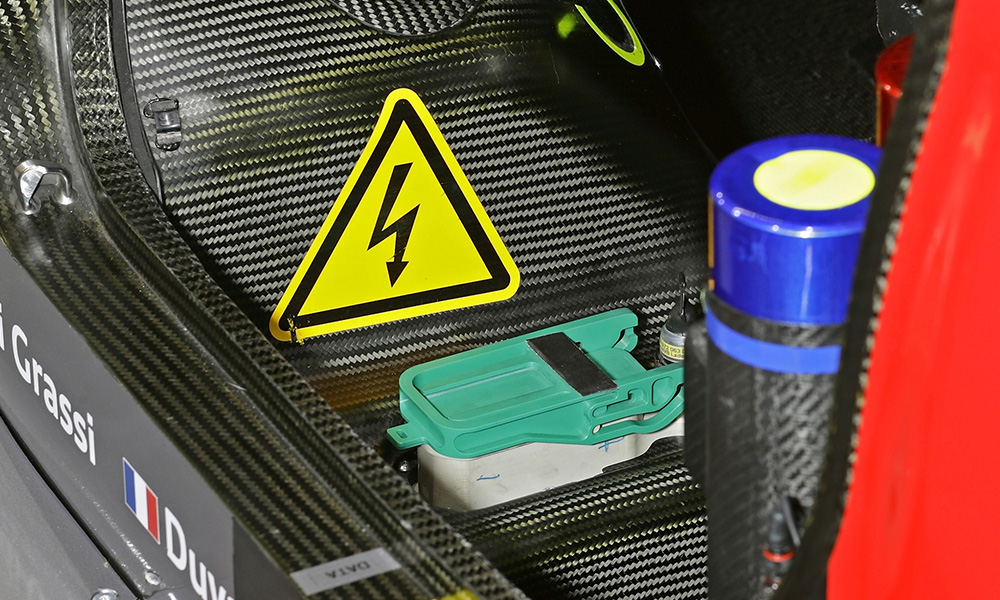
Photo: Audi
IMSA has yet to decide on the voltage system for its planned transition to hybrid technology in the next-generation DPi machinery, with manufacturers divided on the level of electrification.
Planned for a 2022 launch, discussions on the so-called DPi 2.0 formula continue this week with a steering group committee meeting at IMSA’s headquarters in Daytona Beach, which could provide clarity on its future direction.
Sportscar365 understands discussions have involved a 48-volt low-voltage battery, considered an affordable off-the-shelf solution that’s seen in a number of production cars, as well as higher voltage option in the range of 100-400 volts that would result in increased electrical power output.
By comparison, current-generation LMP1 hybrids have 800-volt systems, while the Gen2 Formula E car has a peak voltage of 900V.
IMSA President Scott Atherton said that last month’s meeting at Mid-Ohio, particularly on hybrid options, was a “thought starter” with manufacturers.
“Even though everything that was presented and discussed in the last gathering we had at Mid-Ohio, nothing was presented in a way that would say that this is directionally that we’re headed, or this is a decision that’s been made,” Atherton told Sportscar365.
“It was information that was provided purely as a thought-starter.
“We’ve heard for just about everybody, some more than others, about what their desires are.
“We’re very conscious of the fact that these regulations, which will debut in January 2022, then have a five-year homologation. That takes us out to 2027.”
Ford Pushing for High Voltage System
Ford is among the manufacturers pushing for a high-voltage system, with the Detroit automaker expressing interest in a 300-400-volt system and a minimum power output of 75 kW, which is the equivalent of 100 horsepower.
According to Ford Performance global motorsport director Mark Rushbrook, the outcome of the hybrid system in DPi 2.0 will dictate whether it will commit to a two-year interim program with a current-generation DPi beginning next year.
“We are very interested in [DPi 2.0], not necessarily with the mild part in front of it,” Rushbrook said.
“We’re of the position, I think it’s been stated, that we’re looking for relevant technology. For us, that’s a higher voltage or higher power system, which has the potential for DPi 2.0 to implement.”
BMW Motorsport director Jens Marquardt, meanwhile, agreed with Rushbrook in that a 48-volt system is probably “too short of a step” for IMSA at this stage.
Like Ford, the German manufacturer has been one of the nine OEMs that took part in the recent DPi 2.0 steering committee meeting at Mid-Ohio.
“It doesn’t have to be highly sophisticated but I think there’s even common systems available, if you look at plug-in hybrid systems that we, as an OEM, run,” Marquardt said.
“I think you can find partners where it can be a common part and still a system that can give you a boost in performance or efficiency gain that’s visible and something you can communicate to people.”
Atherton acknowledged Ford and BMW’s desire for higher-voltage systems and said they are not alone in that belief.
However, he admitted that whatever decision IMSA comes to, there will be unhappy parties.
“It’s just the reality that some will embrace it and others will not,” Atherton said. “I appreciate how Simon [Hodgson, VP of Competition] has organized this, because it’s a very well-thought out approach.
“The level of feedback and the clarity of direction that we’re getting from these OEMs is unmatched.
“It’s all confidential, but when we do get together, nobody knows who’s responded with what information.
“But we will share the results of that feedback and collectively make a decision.”
Atherton reaffirmed their goal of having a set of draft regulations to manufacturers by the end of the season.
However, Rushbrook indicated they should get a better idea of where the hybridization talks are going “well in advance” in order to make a decision on a possible 2020 DPi program.
Global Hybrid Solution “Makes Sense” for Manufacturers, Championships
Atherton, Rushbrook and Marquardt have all voiced support of a global hybrid solution that could be used across multiple series and platforms.
Ford has been in favor of a base unit that could be used not only in IMSA but NASCAR and potentially Virgin Australia Supercars as well, while BMW’s Marquardt said he’d like IMSA to collaborate with DTM and Super GT’s Class 1 regulations, which will eventually roll out hybrids as well.
Atherton admitted it “makes sense” for a global integration but fell short on any specific commitments.
“The feedback we’ve had from our manufacturer partners is that if we’re going to do this, let’s do something that is potentially applicable across multiple platforms,” he said.
“It’s not just the domestic manufacturers that are involved in NASCAR. We’re hearing the same from others.
“I think that’s a global trend, and I think you’d be foolish not to embrace that for obvious reasons.
“If you can create a system that has multiple options of being applied, why wouldn’t you?”



















